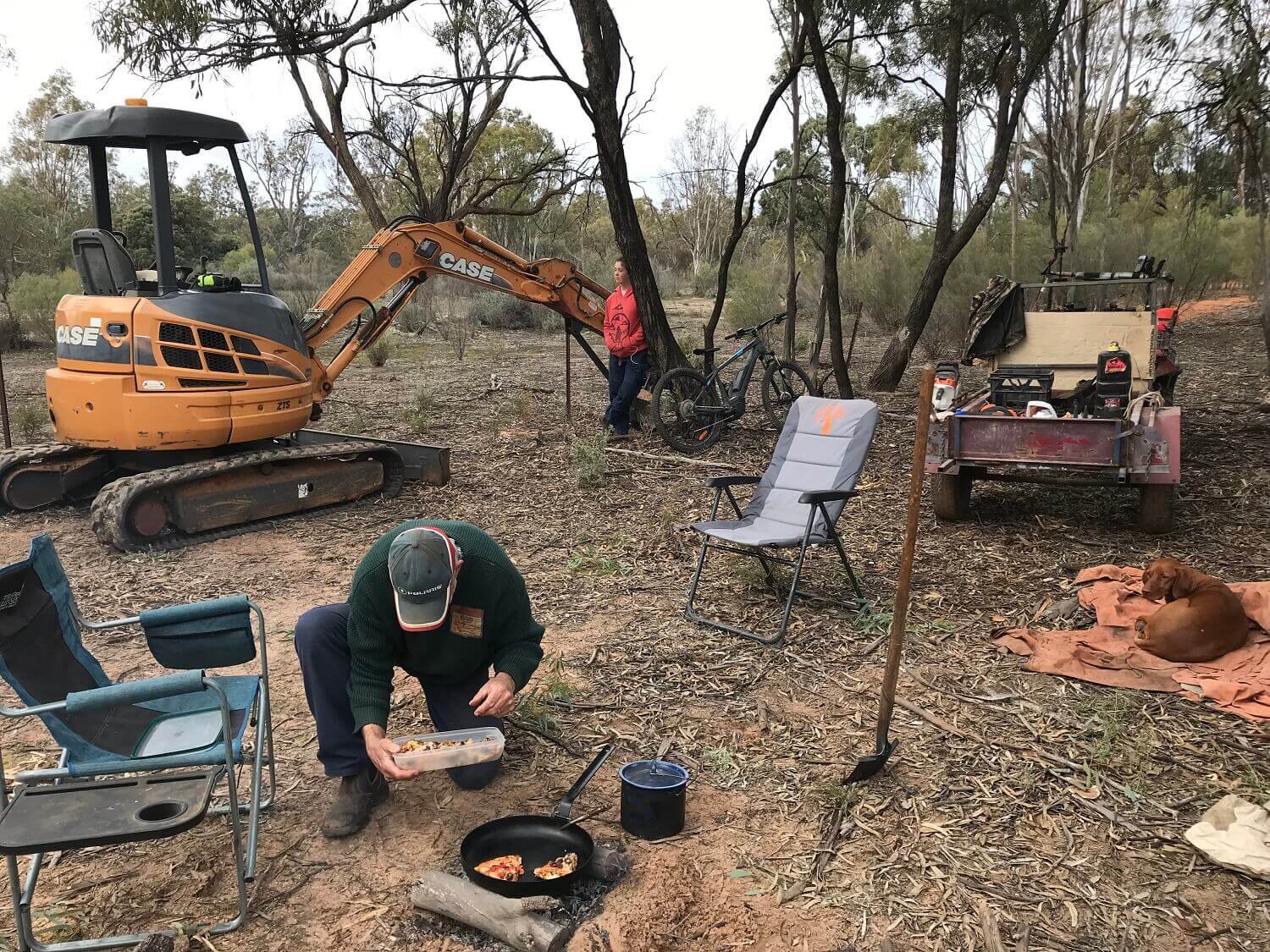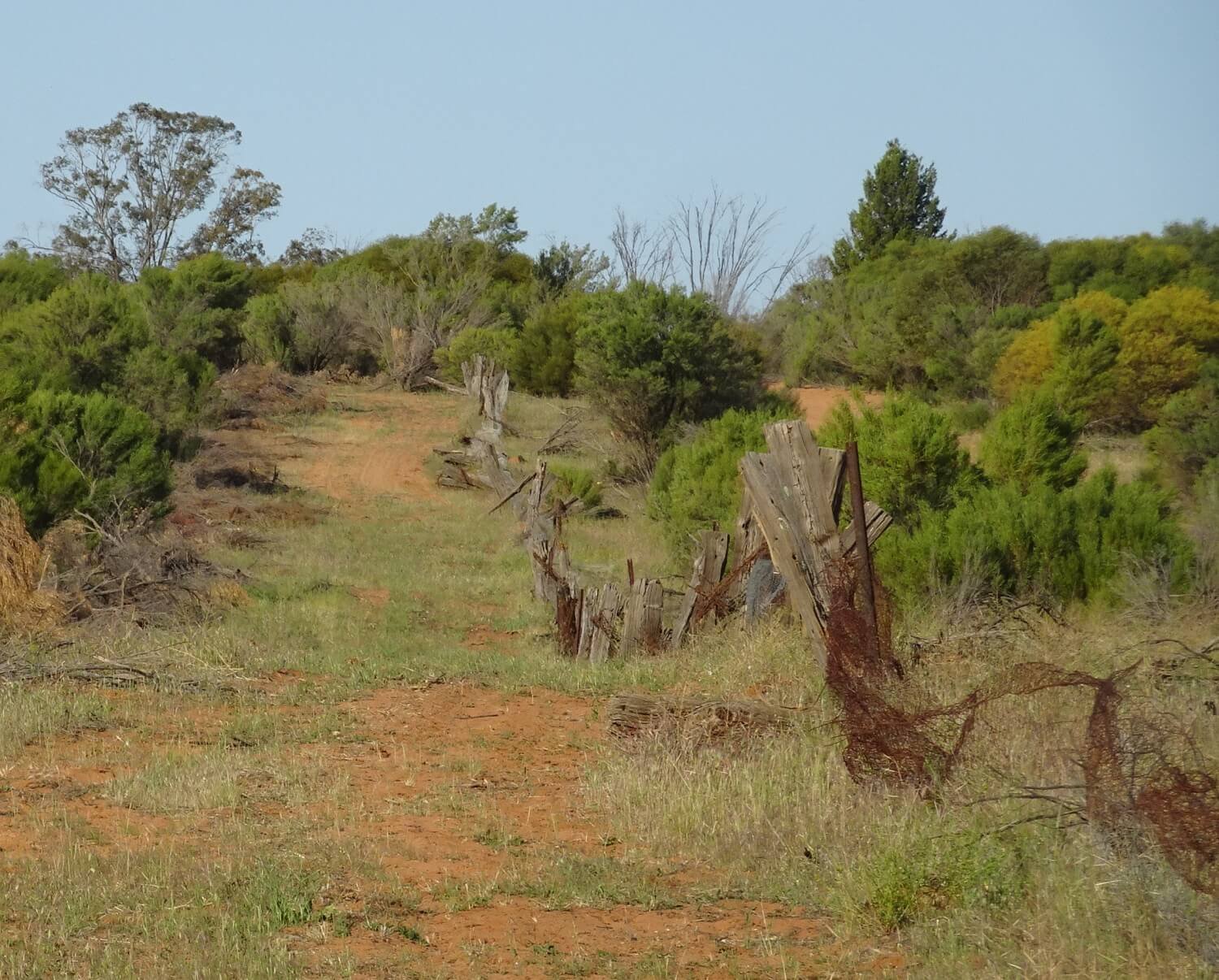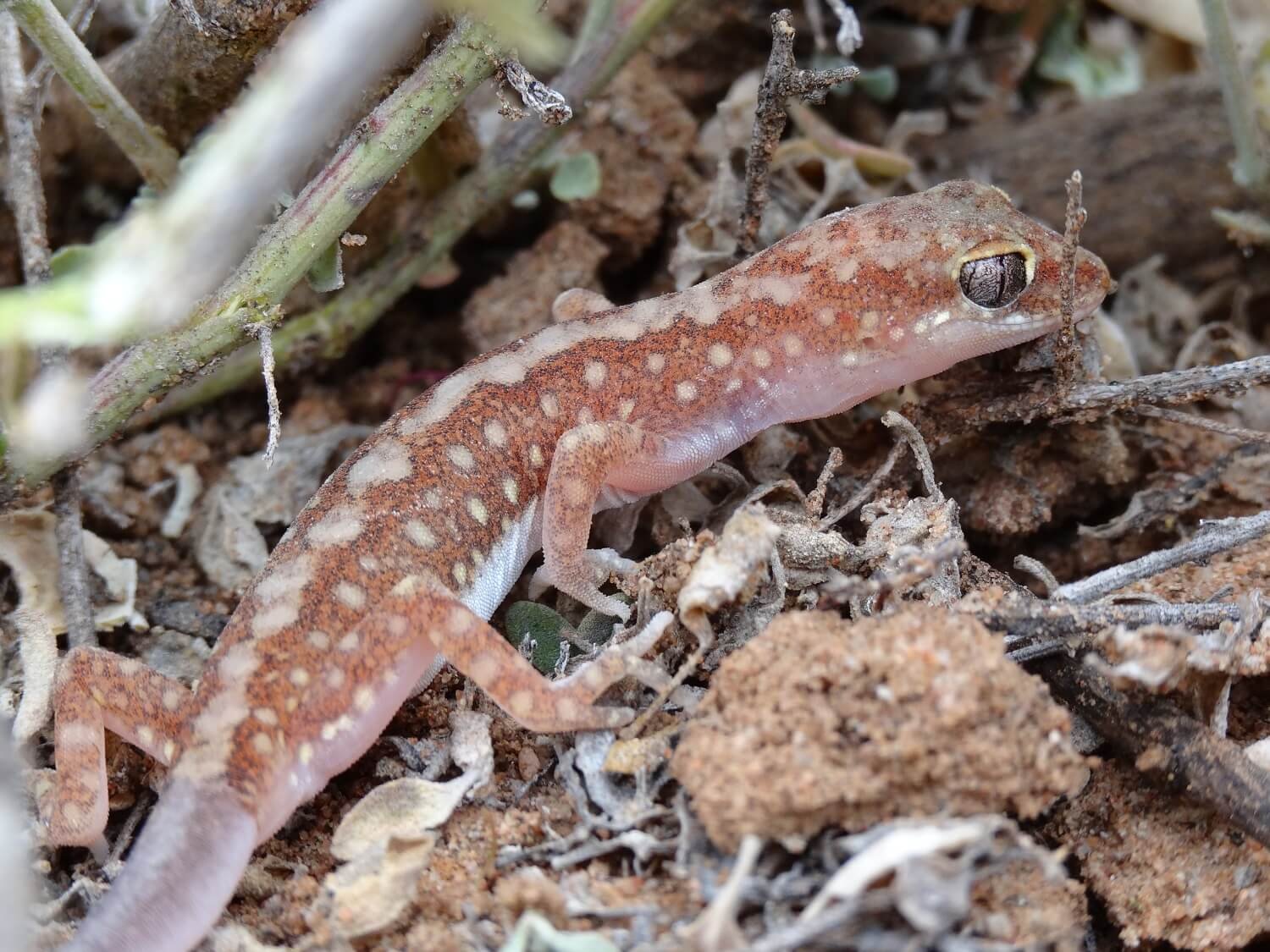Out with the old fence …
We are building a conservation fence around our 490-hectare property. It’s an electric fence that will help us to manage grazing pressure from kangaroos and exclude pigs and goats. No more trampling, wallowing and eating all the palatable plants! This year, we will construct 7.6 km of fencing to complete the 13 km boundary fence.
But first, we needed to pull down the old fence. It’s a mess of old netting that has been patched up and propped up countless times over the years. The netting was a real barrier for wildlife, including echidnas. I love echidnas. They've got cute snuffly noses and great qualifications as ecosystem engineers. We're hoping that removing the netting adjoining Hattah Kulkyne National Park will allow echidnas to move about more freely.
It’s been a lot of work for the whole family. Em cut all the wires that twitched the fence to the posts. Phil used the excavator to pull out all the posts, and I followed along behind rolling up the netting. Then we prepared the fenceline as gently as possible. Our soils are so fragile that they can’t handle much disturbance before they start blowing away. We used a little rake and a grader blade that is pulled behind the 4-wheel motorbike. It worked really well.
What to do with the old fence? Well, the netting and the steel posts will be recycled. We've kept all the wooden posts to use as ... lizard hotels! We noticed how quickly lizards moved into the first random stacks we made. Now, we've improved the design to contain more nooks and crannies. We also incorporate leaf litter and vegetation. Habitat for cool things like Blind Snakes and maybe a Bandy Bandy.
The wooden fence posts have all been cut from native Pine (Callitris gracilis). Semi-arid Pine Woodlands are now rare in Victoria and it is not difficult to see why. We've removed at least 4000 old fence posts whilst pulling down our old fence. The trees would have been felled from the property from the late 1800s onwards. We think the old fenceline could be more than 100 years old. We've salvaged a section of fence for its historical value. More on that another day.
Our fencing project is supported by the Victorian Government through the Community Volunteer Action Grants, the Australian Government through the Murray-Darling Healthy Rivers Program, a Gallagher - Landcare Australia grant, and with help from Bio R, the Jesse Chaplin-Burch Trust and People and Parks Foundation.











